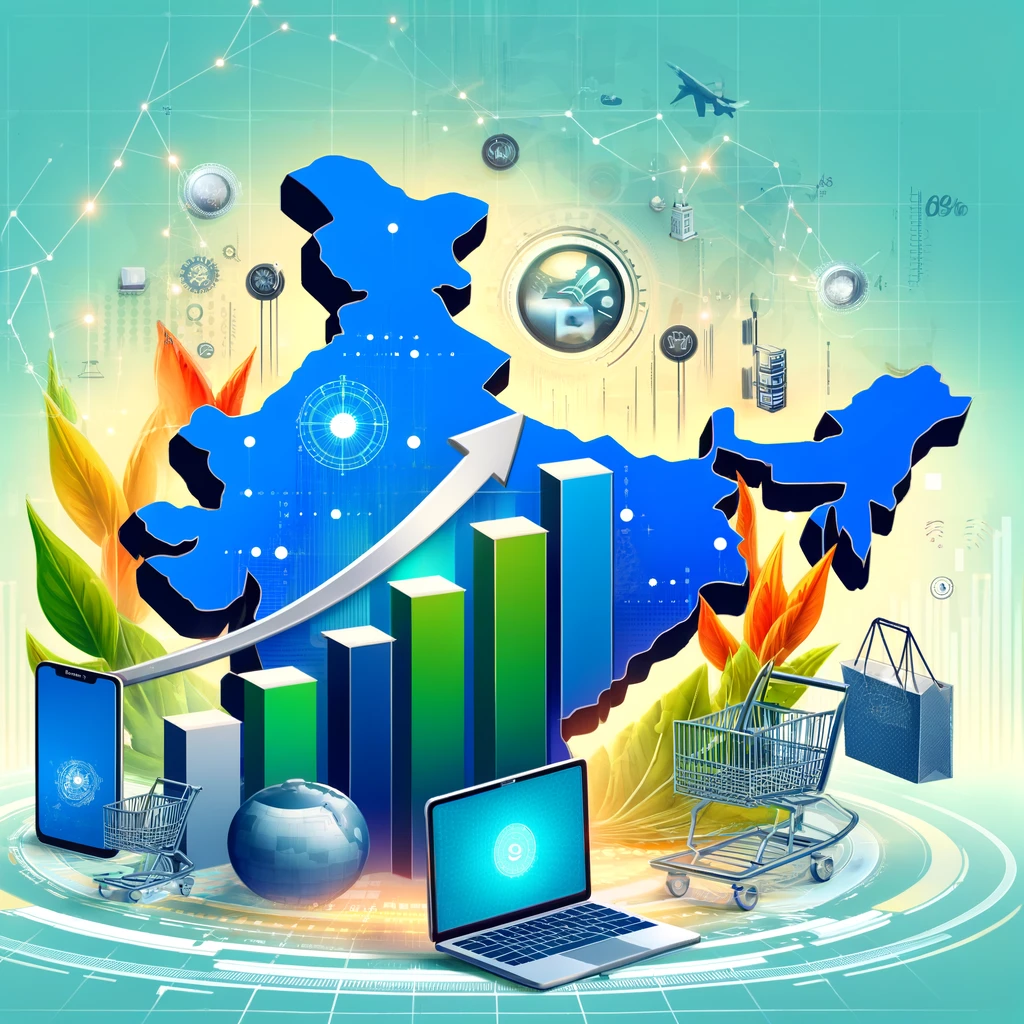From the time when India’s E-commerce sector was non existent only a little over 10 years ago, its growth has been nothing short of impressive and it now ranks as one of the world top markets. In the age of cheap internet and smartphones that have flooded in to our lives, online shopping has really become synonyms with an Indian shoppers behavior. The sudden rapid explosion of E-commerce is more than a passing wave and represents nothing less than a revolution in the retail scene that Leadership Dialogue Newsletter predicts will have far-reaching implications for how business operates, as well as shopping habits among consumers. Analysing this growth dynamics is important for everyone who dreams to be a part of the fast-growing digital economy in India.
Historical Context
The early start of E-commerce in India dates back to the 2000s, but it was only at this point that we saw E-commerce escalating. That era began with the launch of Flipkart in 2007, and was joined by global giants (Amazon) since 2013. While primarily starting out as online shopping places for books and electronics, they soon offered everything from fashion to groceries.
Some of the key milestones in growth include the emergence of mobile internet, digital payment systems and governments initiatives towards building a digital India. E-commerce in India has undergone several phases and is a driving force behind the success of internet-businesses. The E-Commerce market will reach to USD26 billion by 2020 from today at USD6.78 million (2017).
What is Fuelling the Rise of E-commerce

The reasons for the meteoric and continued rise of E-commerce in India can be attributed to several components;
Rise in Internet and Smartphone Use: The fall of prices of smartphones coupled with affordable data plans have got millions online to shop, luring e-commerce majors. With 600 million internet users, India has joined the top global digital markets.
INNOVATION IN DIGITAL PAYMENTS: The advent of digital payment options like UPI (Unified Payments Interface), and mobile wallets, and online banking have made it more convenient for the consumer to engage in e-commerce. Having said that, the demonetization of 2016 also helped flip quite a few minds towards digital payments.
Government Action on Digitalization: The governmental policies like the work of flagship initiative, Digital India to make people digitally empowered and boost E-commerce are in place. A trend towards adoption of cashless transactions, backed with better infrastructure has also supported the growth.
Growing Consumer Trust: E-commerce platforms have also evolved over a period and spend significant resources on establishing consumer trust — by offering secure payment gateways, easy to return policies and responsive customer service. Because of this, so many people now consider shopping online.
Top E-commerce Giants in India
A few major companies dominate the e-commerce landscape in India, each contributing to growth of this industry with unique offerings.
Amazon India: Amazon is one of the largest e-commerce platforms in the world and it brought its vast experience & resources to India by offering an extensive range, competitive pricing, and fast delivery.
Flipkart:- An Ambitious Global Path To Offer The Very Best Of India Founded In 2007, And Headquartered At Bangalore/ Bengaluru. Flipkart, which was acquired by Walmart in 2018 to scale operations across India — its primary focus is small cities and towns.
Myntra and Ajio – These platforms are specialized in the fashion & lifestyle category which has established itself as fast growing segment considering the demand for fashionable clothing, accessories at an affordable price.
JioMart: The latecomer to the party, Reliance Retail is using its juggernaut network to enter into online grocery business with its JioMart which has started providing hyperlocal delivery services across India.
Challenges Faced by E-commerce Industry
The Indian E-commerce industry has grown rapidly in numbers, however there are many challenges faced by this sector.
- Logistics & Supply Chain: This is the big one because of how expensive it can be to manage a quality supply chain system and deliver things across such a huge country like India. Poor infrastructure, patchy service availability and the high cost of delivering goods on time are lurking challenges for companies.
- Competition and Market Saturation: Indian E-commerce market is highly competitive with dozens of them trying to get a piece of the pie. This has resulted in aggressive pricing tactics that can eat into profit margins and potentially make it difficult for smaller players to remain.
- Regulatory Challenges: Technology and E-commerce business has its upsides but bringing them into the world to meet India’a regulatory compliances will be no less than a tyranny. The complexity of regulations in certain areas like data protection, foreign investment rules or consumer rights law is significant.
Influence Of E-commerce On Indian Retail Market

Key highlights from this report are the key points that have impacted traditional retail models due to E-commerce rise in India. When they were dominating retail, brick and mortar saw their entire landscape change as well — adopting omnichannel approaches that allowed them to flip a switch between online or offline sales. E-commerce — which in turn has sown the seeds for new sales and business models like D2C companies (direct-to-consumer) or subscriptions.
Also, millions of jobs in logistics, customer service and technology were created by the E-commerce boom has significantly contributed to economic growth. It offers a country-wide, even an international market reach for small and medium-sized enterprises (SMEs) making it easy to target customers far beyond their local area.
Consumer Behavior Trends

E-commerce platforms have changed the way consumers behave in India, offering convenience and an Olympia of choices. Meanwhile, the global COVID-19 pandemic has accelerated this change dramatically as more consumers flocked online to shop both essentials and nonessentials.
Mobile Commerce (M-commerce): Since most people in India are android users and prefer to surf the internet on their smartphones, M-commerce has taken over E-Commerce. The rise of the on-demand economy in recent times, has heightened e-commerce platforms and many have optimised their mobile apps & websites to suiting this very growing market segment.
Shopping Experience Personalization: A personalized experience is being offered at the E-commerce platform by leveraging technologies like artificial intelligence (AI) and machine learning. Whether through personalised product suggestions or hyper local advertising, they are using data-driven insights to improve the customer experience.
E-commerce in India: The Road Ahead
Several Growth Opportunities For E-commerce In India Future Of Indian E-Commerce in 2018 The growth of e-commmerce businesses was awesome last year, and still expected to grow bigger by the end of this Coming Year.
Integration of Emerging Technologies: The advent of emerging technologies like artificial intelligence (AI), augmented reality (AR) and virtual reality (VR) into e-commerce web store designs will create a more captivating online shopping experience, as these make it interactive.
Increase in Tier 2 and 3 Cities — As growing Internet penetration reaches smaller cities & remote locations, it will form the main growth avenues of E-commerce industry. The first business to crack this market will have a huge advantage.
Sustainability & Ethical Practices: As more and more consumers become environmentally conscious, E-commerce platforms will increasingly have to do their bit for the environment by engaging in sustainability practices- like using eco-friendly packaging or sourcing products ethically if they wish to meet these changing consumer demands.
Conclusion
E-commerce has not only become a trend but also is evolving into the force that changes all — E-scape! Several factors have contributed to reach this location, from internet penetration increase in the country to digital payments becoming a norm. Though the road is not going to be that easy, but Ecommerce in India has a big and bright future with so many new technologies and unexplored markets which can provide great opportunities for growth. It will play a significant role in nurturing Indian e-commerce and thereby developing the nation’s economy, as it is no secret that this budding industry holds promise for future of retail in our country.

